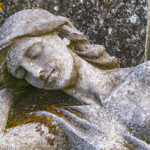Holodomor Memorials: A Tribute to the Victims of a Forgotten Tragedy
The Holodomor, one of the most devastating man-made famines in history, occurred in Ukraine during the early 1930s. This horrific event, orchestrated by Soviet authorities, resulted in the deaths of millions of Ukrainians through a combination of forced collectivization, grain confiscation, and deliberate starvation. Despite its magnitude, the Holodomor remained relatively unknown outside of Ukraine for many years. However, with the passage of time, the victims of this tragedy have been honored and remembered through the establishment of Holodomor memorials. These memorials serve as a poignant reminder of the suffering endured by the Ukrainian people and the importance of preserving the memory of this dark chapter in history.
The Unveiling: Commemorating the Victims
One such memorial stands tall in the heart of Kyiv, Ukraine’s capital city. The Holodomor Memorial, unveiled in 2008, is a powerful testament to the millions who perished during the famine. As I stood before the monument, emotions overwhelmed me. The bronze statues of starving men, women, and children depicted their anguish and desperation. It was a chilling reminder of the atrocities committed against innocent lives.
A Journey to Remember: The National Holodomor-Genocide Museum
Located in Kyiv, the National Holodomor-Genocide Museum provides visitors with a comprehensive understanding of the famine’s causes, consequences, and the resilience of the Ukrainian people. As I stepped inside the museum, I was greeted by photographs, artifacts, and personal accounts that vividly depicted the horrors of the Holodomor. The museum’s interactive exhibits allowed me to connect on a deeper level with the victims’ experiences, fostering empathy and understanding.
Healing Through Art: The Holodomor Memorial Wall
In the heart of Washington, D.C., the Holodomor Memorial Wall stands as a tribute to the millions who lost their lives. This somber yet captivating memorial features a wall adorned with thousands of wheat stalks, symbolizing the agricultural abundance that was stripped away from the Ukrainian people. As I walked alongside the wall, reading the names of villages affected by the famine, I couldn’t help but feel a profound sense of loss. The memorial’s design not only honors the victims but also serves as a stark reminder of the consequences of totalitarian regimes.
Remembrance and Resilience: The Holodomor Memorial Complex in Kiev
In addition to the Holodomor Memorial and the National Holodomor-Genocide Museum, the Ukrainian government established the Holodomor Memorial Complex in 2011. This expansive complex encompasses several elements, including a museum, a memorial candle, and a symbolic field of wheat. The museum’s exhibits provide a comprehensive historical account, while the memorial candle serves as a beacon of hope and remembrance. The field of wheat, gently swaying in the wind, symbolizes the resilience of the Ukrainian people, who have emerged from this tragedy with strength and determination.
Summary:
In conclusion, Holodomor memorials stand as powerful reminders of the suffering endured by the Ukrainian people during the devastating famine of the early 1930s. These monuments, such as the Holodomor Memorial in Kyiv and the Holodomor Memorial Wall in Washington, D.C., provide a space for reflection, remembrance, and healing. Through these memorials, the victims of the Holodomor are honored, and their stories are preserved for future generations. As we visit these memorials and learn about the tragedy that unfolded, it is our responsibility to ensure that the Holodomor is never forgotten and that such horrors are never repeated.













